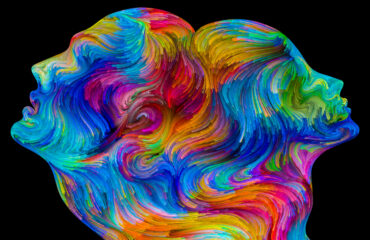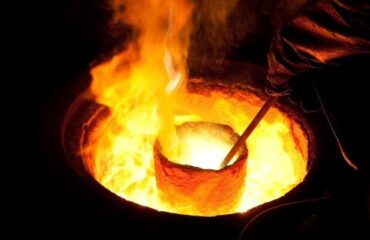
In my last weeks article had covered about System 1 and System 2 of the brain how each influences the way we function and how we form habits. Had stopped with the example of the British cycling team and how very small measures to correct the various process gaps had changed this average team into world beaters. We all start off on a great note on all our new year resolution targets whether it is related to weight loss or getting fit etc. The momentum continues for the first 15 days or the first one month.. The problem with many of our resolution is that despite the good and consistent efforts for about a month we very often do not find any noticeable change and we slowly start loosing interest and momentum..
Let me explain this with a very different example. When we boil water in the stove for the first few minutes you would hardly see any noticeable change in the water though if u touch the container it might already be hot. Then slowly you see a bubble here and a bubble there which also might not be visible if the container that you are using is very big.. Then suddenly when you reach close to the 100degree centigrade the water starts boiling. The water didn’t start boiling because of something that happened at 100 degree centigrade. It was the building up of energy from the time the water started getting heated that led to the water boiling at 100 degree centigrade. For the purpose of habits lets call the 100 degree centigrade as the tipping point ..For the period from 25 degree to 100 degree where we could hardly see any visible difference in the water though there is continuous and equal energy being transferred to the water from the time the heating has started. is what we could call from the habits perspective as the Valley of Disappointment
So the first one month or two or three months of trying to reduce weight where we do not see any difference is what we could all as the Valley of Disappointment. We are all used to expecting changes to happen in a linear fashion with changes happening on a daily basic. But Habits are like bamboo where you hardly see any growth above the ground for the first 5 years during which period it builds its roots underground…Then with a period of 6 to 7 weeks its growth explodes. Habits like most compounding effects take time to show results before they start exploding…Consider these examples if an airplane taking off from Bangalore adjusts the heading angle by 5 degree further east at take off it will end up in Kolkata instead of its original destination of Delhi. The initial difference was very small of 5 degrees but over the period of travel this got compounded to ensure that you reached a place which was thousands of kilometers away from your original planned destination. New habits are like than. A new year resolution to workout daily will only lead to 1% of improvement daily which like the boiling water or the bamboo will not be visible for a long time but will lead to thirty seven times betterment by the end of the year..
Am sure we have all experienced the situation of jumping from one work out to another or shifting from one diet to another shifting from one execution plan to another. Its very often not that the earlier workout or diet or what we were doing at work wasn’t working and moving us towards the goals that we had set in each of these categories. It was more because we just got bored of doing the same thing again and again. So the next biggest block while trying to convert those new year resolutions into habits is boredom. As humans we quickly get bored when we keep on doing the same thing again and again. Which is why habit forming products keep providing novelty in small steps. So a video game provides visual novelty while junk foods provide culinary novelty..
So let me explain this with an example. Steve Martin is a popular American actor ,comedian, writer, producer, and musician. I first noticed him in the popular movie the Father of the Bride. Steve worked in Disney land during his summer break and it was during this period that we felt comedy would be his passion and what he would aim to do going forward. Steve recollects how in his initial years of doing small comedy acts in clubs the people in the clubs were so busy drinking or talking that they never even bothered to listen to his jokes forget about laughing. In fact he also quotes instances of were he had to perform to an empty club. But he kept on improving till he became a success almost 15 years later ..In his words it took him 10 years of learning and another 4 years of refining before he actually started getting some results. So how did Steve martin keep himself motivated and continue to build on his habit ..The best way to keep the human brain motivated is to continue working on tasks of manageable difficulty often called as the Goldilocks Rule
The Goldilocks Rule states that humans experience peak motivation when working on tasks that are right on the edge of their current capabilities. Not too hard…Not too east. Just right. Steve Martin followed this principle by expanding his comedy routine every year by a minute or two and also by adding newer and newer material to his acts..
So while trying to build a habit its important to keep your immediate targets as per the Goldilocks rule and once a habit has been formed to continue to advance it in small steps as these small improvements keeps the brain fully engaged as if done well leads to what is often referred to as a flow state ..
What is the flow state
In the last article had covered about how System 1 part of the brain is what normally takes care of all routine things which includes your habits and the System 2 part of the brain is what takes care of the effortful and slow process like doing a complex mathematical multiplication. So we could assume that System 1 and System 2 part of the brain as residing in the opposite ends of the spectrum of thinking. The more automatic a particular activity that we are doing the more it slides to the system 1 part of the brain and while doing an effortful activity it slides more and more towards the system 2 part of the brain. In the flow state you are using all the automatic and implicit knowledge related to the task which is residing in the system 1 part of the brain while also using the system 2 part of the brain to address the new challenge that has been incorporated in the activity. Both the brain modes (System 1 and System 2) are fully engaged and working in sync during this flow state..
It is the mastery of the flow which enables athletes like Usain Bolt and Michael Johnson to keep improving on their timings. Lets consider the specific example of Michael Johnson
Michael Johnson who won 8 world championship gold medals and four Olympic Golds is the only man to have ever won the gold in both 200 and 400 meters in a single Olympics.. Johnson’s stiff upright running position and very short steps defied the conventional wisdom that a high knee lift was necessary for maximum speed. In the 200 meters Johnson kept improving his timings from 1986 to 1996 while in the 400 meters he kept improving on the same till 1999
So while deciding on your new year resolutions please keep in mind that there will be weeks and months before you really start seeing any visible change that the new routine has brought about to you. Also keep in mind that doing the same think again and again will lead to boredom and a tenacity to shift to something similar like a new workout etc ,which can only be overcome by achieving the state of flow that we explained above..
We will start on the various steps that get involved in making of our habits very often without even our knowledge in the next article of this series .But before I wind up would request everyone to think of an habit that all of us have of brushing our teeth. Being a habit that has got build up in the last 100 years why and how has this become a habit adopted by everyone. More of that in the next article…Keep watching this space for more..



